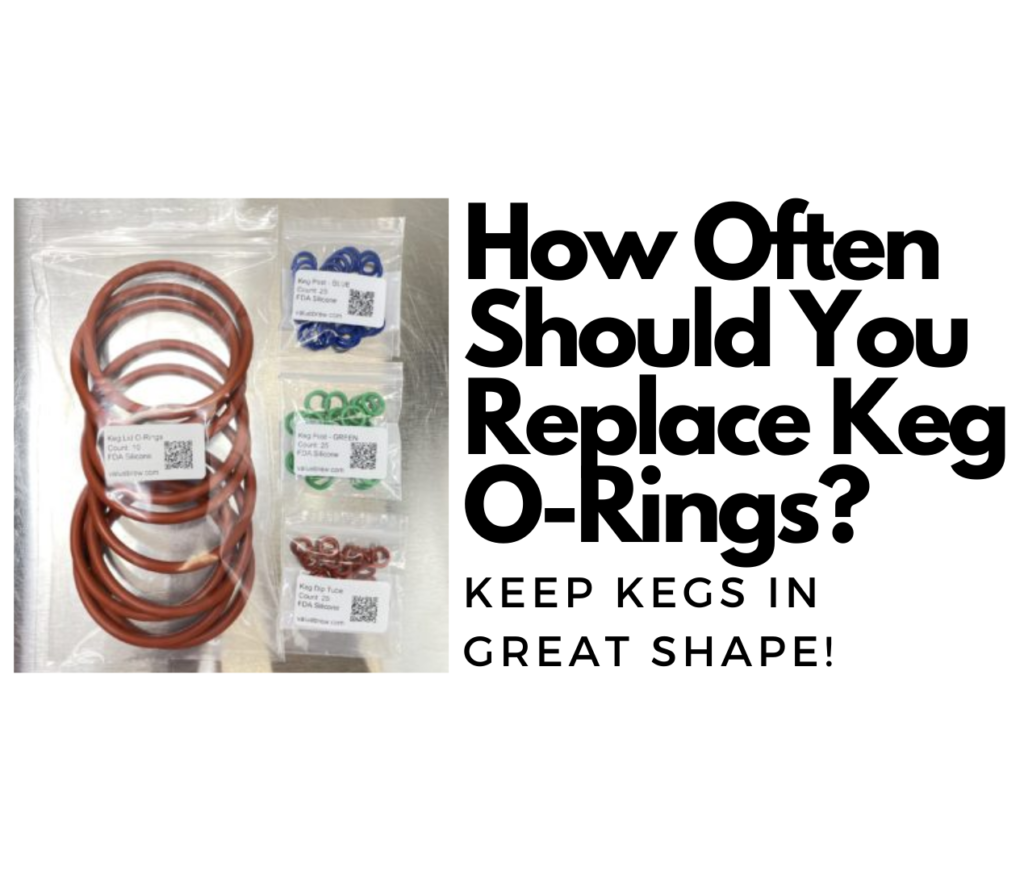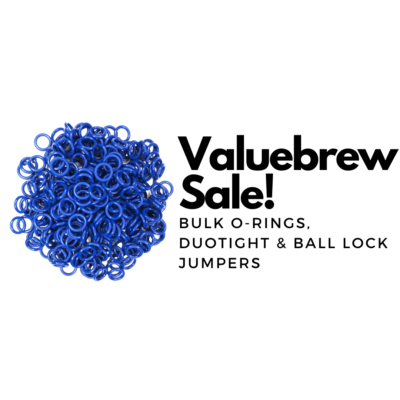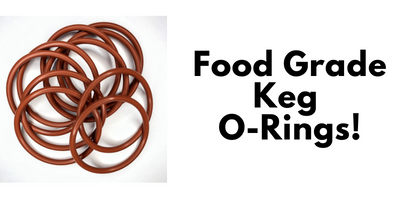
How Often Should You Replace Keg O-Rings? – A Proposed Schedule for Keeping Kegs in Great Shape
How Often Should You Replace Keg O-Rings?
I think you should replace all keg o-rings when you refurbish or obtain a used keg. Generally speaking they are going to be worn out and even if they aren’t they’ll smell of soda pre-mix. Beyond that, who knows what they’re made from. Start with a clean slate.
What about after that? Of course, you could just keep using them until they break, they smell or look horrible or… until you lose a tank of CO2 due to an o-ring related leak. On the other end of the spectrum some people change o-rings every time they keg.
Limited Time Stacking Deals on Food Grade Replacement O-rings
For a short time, Valuebrew is discounting most of their gear including bulk food grade o-rings (i
Valuebrew offers a lineup of food grade keg replacement o-rings in bulk quantities. Most offerings are silicone or EPDM with one Buna-N option. Everything they carry is food grade, more info below. They have some unique offerings like bulk pin lock size post o-rings, replacement universal poppet o-rings, bulk internal QD o-rings and color coded Blue and Green post o-rings
Some of these offerings are detailed in our Keg Rebuild How-To
Save an EXTRA 15% when you spend $30 or more on select items at Valuebrew. This stacks on top of existing discounts. Includes…
- Bulk Food Grade O-rings
- Custom Color Post O-Rings
- FDA Rated EPDM O-Rings!
- Universal Poppets
- Ball Lock Jumpers
- DuoTight Compatible Gear
Use coupon code VBDEAL with an order of $30 or more to get the deal
Depending on material, keg o-rings have a shelf life. At some point, materials may become brittle. Beyond shelf life, o-rings wear out from use – compression and abrasion. The other potential issue is materials compatibility. Do your o-rings break down from the chemicals you subject them to? Even compatible materials will break down given excessive exposure to acids like Star San. See: Star San Tips & Tricks for more on that.
Keg manufacturer AEB says to replace o-rings yearly. AEB produces some of the best kegs on the market and I agree with the one year in most cases. Because of their very low cost, I suggest changing high contact, high risk leak o-rings more often.
High Risk:
- Post o-rings: Especially gas. Leaks originating from gas post very difficult to detect.
- Gas dip tube o-rings: Leaks here are easier to detect, but I also classify these as high risk. A leak at either the gas post or gas dip tube is invisible and has frustrating consequences… heading to your CO2 source to swap or fill a tank. Better safe than sorry.
High Contact: Internal QD and Universal Poppet O-Rings. These touch every ounce of beer that’s poured.
I suggest using Daylight Savings dates as a reminder. Something like this…
- Daylight Savings Begins (Spring): Replace high leak risk and high contact o-rings – Post O-Rings (especially gas), Gas Dip Tube, Internal QD O-Rings and Universal Poppet O-Rings.
- Daylight Savings Time Ends (Fall): Replace all keg, poppet and QD o-rings.
Most of these o-rings are pennies each when bought in reasonable bulk quantities. Regularly replacing, costs very little and helps stave off unwanted off flavors, leaks and lost CO2. This schedule should keep your kegs working great from a gasket perspective.
I use and recommend Valuebrew’s lineup of food grade o-rings available in EPDM, Silicone and Buna-N
This write-up is part of my post on rebuilding kegs – Jump To This Section – If you look through the post you’ll see just how good the keg looks at the end.
More Homebrew Finds!
- Last 50 Finds!
- Top Deals – a curated list of the best deals
- Homebrew Reviews – one of the largest libraries of homebrew reviews in existence!
- Our Top Posts – tips, how-tos, resources posts and more
- Let’s be Friends!
Let’s Be Friends!
Subscribe To Our Email! – 8 Ways to Connect with HBF
Quick Catch-Ups
- Our Last Fifty Finds
- Curated List of Keg Deals
- Curated List of Hop Deals
- Our 10 Most Recent Homebrew Resource Posts
- Top Deals – a curated list of the best of the best
- Our 10 Most Recent Reviews
Top Content
- Our Top Draft and Kegerator Resource Pages
- Our Top Posts – a huge library of how-tos, resources posts & more
- Our Massive Library of Reviews – view the entire list of use our Review by Categories to find just what you’re looking for
This post may contain affiliate links. We may make a commission when you use our links. This will never cost you extra. Thank you for supporting Homebrew Finds!
greatdealsMake sure the components you use are compatible and rated for your intended application. Contact manufacturer with questions about suitability or a specific application. Always read and follow manufacturer directions.tag:lnksfxd top:rebuildkeglnksto lnksto:kegrebuild rp:lnkshowoften:rp












